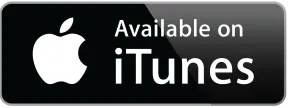
Today, we are excited to present a very special episode. Highlights from our new book: The Mobile Growth Handbook 2021 Edition.
We have collected the best insights from 90+ episodes of the Mobile User Acquisition show, and compiled them into this book. It is a treasure trove of wisdom from some of the smartest folks in mobile, who are on the frontlines of growth.
There are 11 sections in total, running the gamut from strategy and UA channels, to growth engineering and virality. There is a dedicated section on iOS 14 strategy as well, which as we all know is especially relevant right now.
You’ll find a link to download the book in the show notes, the transcript and on our website – but for today’s episode, here you go on a selection of highlights from the book.



ABOUT ROCKETSHIP HQ: Website | LinkedIn | Twitter | YouTube
DOWNLOAD EBOOK HERE
SECTIONS
✅ App Store Optimization
🎚️ UA Channels
🧠 Strategy
🚀 Launch
🎨 Creative
💰 Monetization
👫 Hiring, Leadership, Growth Teams
📱 iOS 14 Strategy
🌱 Growth Engineering & Technology
✨ Virality
💐 Retention, Engagement & Onboarding
FULL TRANSCRIPT BELOWLet’s start with the all-important creative. Why do some of them work, and some of them fail? How do you define success?
When speaking to guests, a clear theme emerged: successful creatives are dependent on the teams that make them. We hear from Gabe Kwakyi, who was the founder of Incipia:
Gabe: Art directors and really, the marketers – they own the ‘what’ that is being produced, and the designer makes it come alive. We figured that placing the hit rate with the art directors and marketers was more of a successful outcome. For designers, we want to be able to produce a certain number of concepts or once we find a hit, especially a Grand Slam hit, produce a certain number of iterations within a certain timeframe, so that we can extend that lifetime as long as possible.
When we spoke to Gonzalo Fasanella, chief marketing officer at Tactile games, he too focused on the importance of the team structure:
Gonzalo: Every time you put an analytical guy that is a media buyer and has a business-oriented profile, with someone that has a creative-oriented profile, together in a meeting, and they have to discuss about what video to do next, what to iterate, the guy with the data behind pitching, with the ability to pitch, the ability to convince people, will tend to win 99% of the conversations. So everybody will start doing what the UA person wants to do, which not only doesn’t bring very good results all the time, but it really diminishes the morale of the person that needs to develop the videos, because there’s no ownership for that person.
Alice Guillaume, senior director of marketing operations at Applovin, goes further and talks about the specific process of brainstorming that helps get great creatives from teams:
Alice: We give specific directionality on what to brainstorm on. And that’s super important, I tend to find a lot of brainstorms are very open ended because we want people to express and to be free and that’s all wonderful. However if it’s too vague or if it lacks direction, it actually results in vague ideas and poor results or unintentional results.
So for example, a directive could be: this is the top performing creative, it is falling short in that the click through rates are really really strong, but our drop offs are too high in installs. So we need to find a way to iterate on this creative that maintains right the level of click throughs that we have, but we need to boost install rates by 50%.
**
In another section, our guests focused on the challenges of putting together great teams. We heard about an unconventional hiring process from Brett Nowak, founder of Liquid & Grit. His process optimizes for finding the best person for the job, regardless of their background:
Brett: We have found that experience does not predict ability in our company. We do not say that you have to have any experience, but we do find that if they’re going to be an analyst then knowledge of games really does help. And we generally don’t find people who don’t know games and then are really good at the analysis part.
But, for example, we’ve hired editors—and I’ve gone through hundreds, hundreds of editors, and this is outside of games—and the two best editors I’ve found have no experience editing. One is a lawyer and the other one just happened to respond to a Craigslist ad. Our lead analyst worked at a grocery store before this.
Cassie Chernin, director of user acquisition at Scopely, challenged the language we use liberally and somewhat unconsciously when hiring:
Cassie: I think culture fit is another way to be racist. Going back to when your first day of work, in your interview, you’re going to get along with someone who has a similar background to you. I’m always going to be able to chat with someone better who experienced the same things that I experienced. So my back and forth, my, you know, that flow that you want in a culture fit is always going to be better in someone who is like me, but that doesn’t create diversity.
And:
Cassie: “Work hard, play hard” is another catchphrase made by white men. I’m sorry. I actually prefer to have a work life balance — treat yourself well and do what you feel is right. That’s my reality.
Holly Chen, growth advisor and founder of Ceiling Breakers, talks about how embracing diversity actually begins with the individual:
Holly: someone from the pilot programme mentioned that: “Oh, I never really fully embrace or accept my Asian American identity. I try not to let people notice that I’m Asian American. I want to fit in; I want to just be one of the people, and hopefully they can treat me the same.” In order to fit in, we deny our identity and who we are. And where else does that denial show up in our lives? Yeah, even recognising all these denials that we give ourselves, I think there’s implication on a lot of other areas in our lives.
Anish Shah, founder of Bring Ruckus, agrees:
Anish: First off, having that mindset of the world is against me and is disenfranchising me, there’s truth to that. If you don’t come from this exact sort of mold, and very frequently we’re born into the mold, there’s nothing you can do throughout your life to fit that mold. Don’t think that you’re being a Debbie Downer — you’re being real.
**
This is just a teaser of what is actually in the book.
What we especially love about the insights is that they represent distilled wisdom from our amazing guests – and they’re immediately usable. You can pick a chapter, read it, dip in and out – and apply these insights right away.
We have found the book a great reference and immensely useful. We hope you feel the same. Please do share feedback on our social channels, or reach out to us on email. We would love to hear from you!
Enjoy!
A REQUEST BEFORE YOU GO
I have a very important favor to ask, which as those of you who know me know I don’t do often. If you get any pleasure or inspiration from this episode, could you PLEASE leave a review on your favorite podcasting platform – be it iTunes, Overcast, Spotify or wherever you get your podcast fix. This podcast is very much a labor of love – and each episode takes many many hours to put together. When you write a review, it will not only be a great deal of encouragement to us, but it will also support getting the word out about the Mobile User Acquisition Show.
Constructive criticism and suggestions for improvement are welcome, whether on podcasting platforms – or by email to shamanth at rocketshiphq.com. We read all reviews & I want to make this podcast better.
Thank you – and I look forward to seeing you with the next episode!


